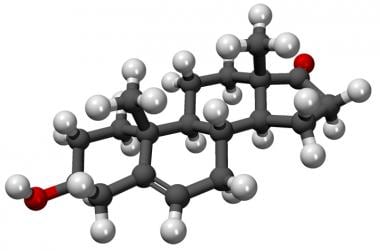Reference Range
Dehydroepiandrosterone (DHEA) can be measured with radioimmunoassay, liquid chromatography–mass spectrometry (LC-MS), or chemiluminescent techniques, and the reference range varies by the technique used.
The reference ranges for DHEA concentrations measured with LC-MS are listed in Table 1.
Table 1. Reference Ranges of DHEA Concentrations by Tanner Stage, Age, and Sex as Measured With LC-MS (Open Table in a new window)
|
Tanner Stage |
Male |
Female |
|
|
|
|
|
Stage I |
110-2370 ng/L |
140-2760 ng/L |
|
Stage II |
370-3660 ng/L |
830-4870 ng/L |
|
Stage III |
750-5240 ng/L |
1080-7560 ng/L |
|
Stage IV and V |
1216-67030 ng/L |
1240-7880 ng/L |
|
|
|
|
|
Age |
Male |
Female |
|
6-24 months |
< 2500 ng/L |
< 1990 ng/L |
|
2-3 years |
< 630 ng/L |
< 850 ng/L |
|
4-5 years |
< 950 ng/L |
< 1030 ng/L |
|
6-7 years |
60-1930 ng/L |
< 1790 ng/L |
|
7-9 years |
100-2080 ng/L |
140-2350 ng/L |
|
10-11 years |
320-3080 ng/L |
430-3780 ng/L |
|
12-13 years |
570-4100 ng/L |
890-6210 ng/L |
|
14-15 years |
930-6040 ng/L |
1220-7010 ng/L |
|
16-17 years |
1170-6520 ng/L |
1420-9000 ng/L |
|
18-40 years |
1330-7780 ng/L |
1330-7780 ng/L |
|
40-67 years |
630-4700 ng/L |
630-4700 ng/L |
The image below depicts the molecular structure of DHEA.
Ball-and-stick model of the dehydroepiandrosterone molecule. Image courtesy of Wikimedia Commons.

